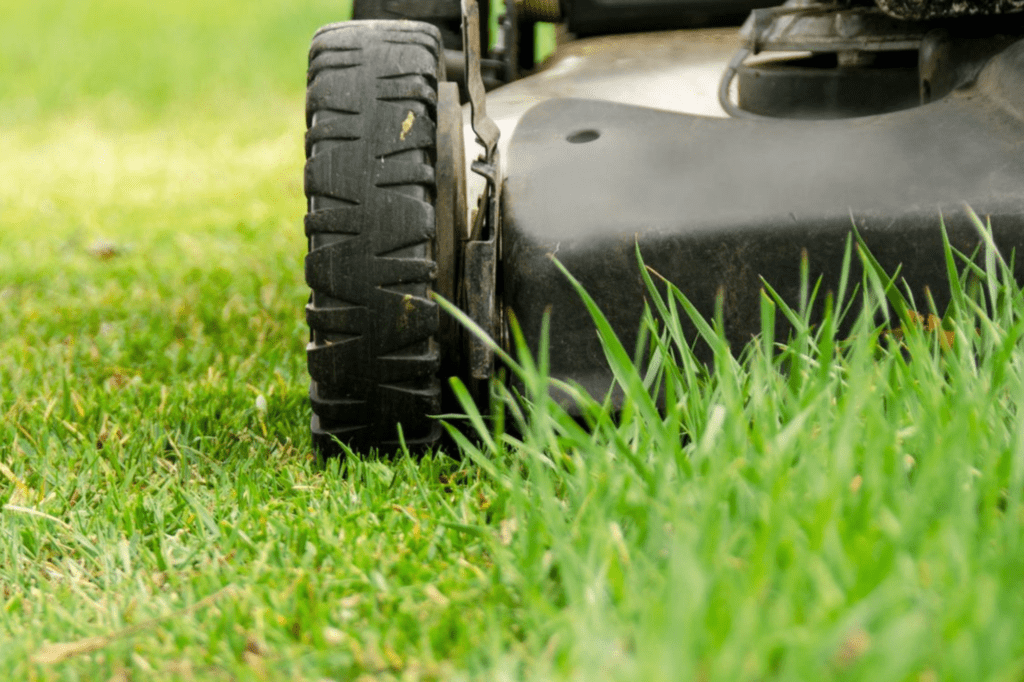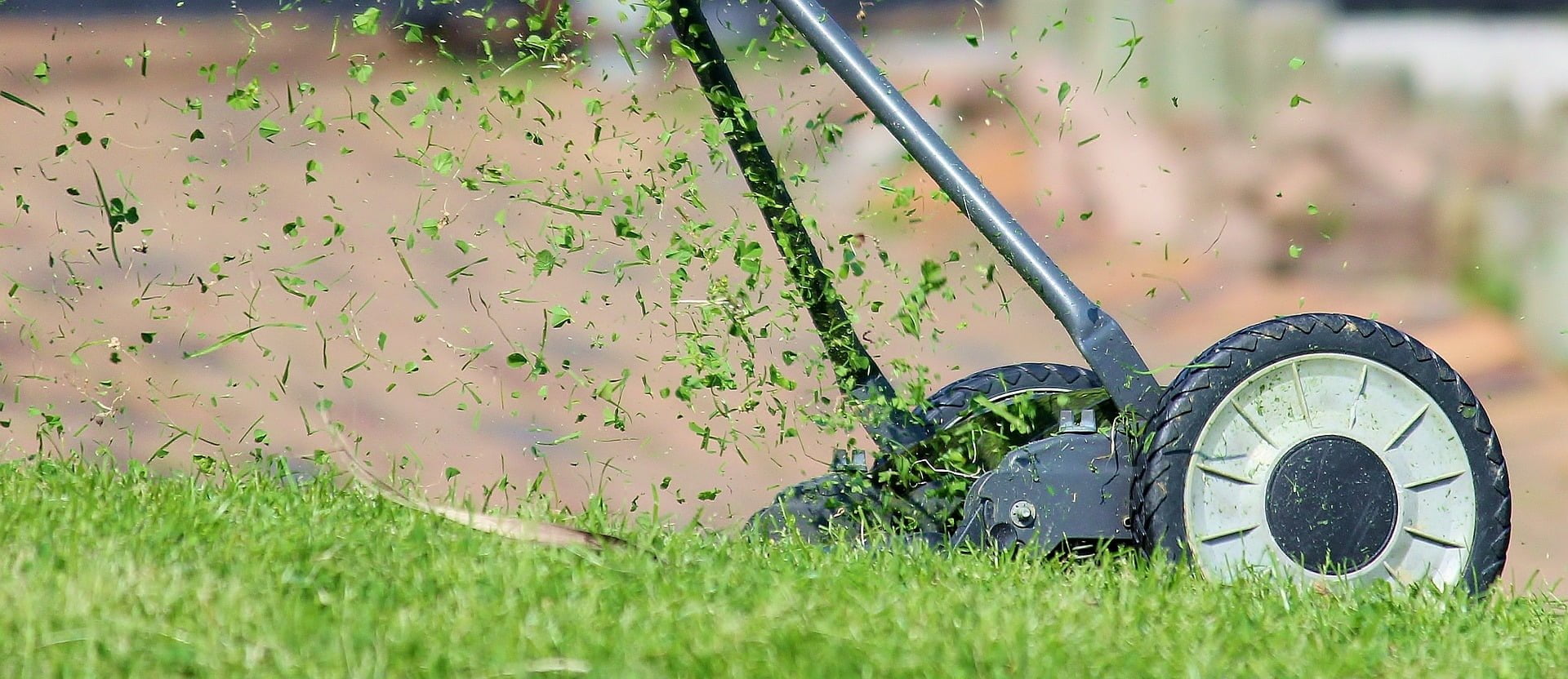Are you wondering how short to cut your grass before winter to ensure a safe and healthy lawn?
It’s important to understand the significance of proper grass length during the colder months. By maintaining the right grass length, you can protect your lawn from winter stress and potential damage.
First, consider the type of grass in your lawn, as different varieties have different ideal lengths for winter. Then, determine the appropriate length based on your grass type.
Using the right mowing techniques, such as keeping your mower blades sharp and adjusting the cutting height accordingly, is crucial for achieving the desired length. Additionally, removing excess debris from your lawn and adjusting your mowing schedule can further promote a healthy lawn.
Lastly, take steps to protect your grass from winter stress, such as fertilizing and aerating, and seek professional advice if needed. By following these guidelines, you can ensure a safe and resilient lawn that will thrive come springtime.
Quick Summary
- Proper grass length during winter is important for protecting the lawn from stress and damage.
- Gradually reducing grass height during winter prevents snow mold.
- Avoid cutting grass too short to prevent weakening the root system.
- Seek professional advice for determining the proper height to leave grass for winter.
Understand the Importance of Proper Grass Length for Winter
You’ll be amazed at how important it is to have the proper grass length for winter! Mowing strategies and lawn maintenance play a crucial role in ensuring the safety of your lawn during the colder months.
By understanding the significance of maintaining the right grass length, you can protect your lawn from potential damage caused by freezing temperatures, snow, and ice.
One key mowing strategy for winter lawn care is to gradually reduce the grass height as the season progresses. This helps to prevent the grass from becoming too long and susceptible to snow mold, a common fungal disease that can damage the grass during winter. By gradually lowering the cutting height, you allow the grass to gradually acclimate to the colder temperatures.
Another important aspect of proper grass length for winter is to avoid cutting the grass too short. While it may be tempting to give the lawn a close shave before winter, this can actually do more harm than good. Cutting the grass too short can weaken the root system, making it more vulnerable to winter stressors. It’s recommended to maintain a grass length of around 2 to 2.5 inches before winter.
Incorporating these mowing strategies and following proper lawn maintenance practices will help ensure the safety and health of your lawn during the winter season. With the right grass length, you can minimize the risk of winter damage and enjoy a healthy, vibrant lawn come springtime.
Consider the Type of Grass in Your Lawn
When preparing for the colder months, it’s important to take into account the specific type of grass that covers your lawn. Choosing appropriate grass types is crucial to ensure its survival during winter. Different types of grass have varying tolerance to cold temperatures and require different lengths for optimal protection.
Factors affecting grass growth also play a role in determining the ideal length to cut your grass before winter. Some grasses grow more slowly in the fall, while others continue to grow rapidly. It’s essential to understand how your specific grass type responds to colder weather to make the best decision.
Consider the following when determining how short to cut your grass:
- Climate: Grass types that thrive in warmer climates may not handle cold winters as well. Adjust the length accordingly to provide sufficient protection.
- Shade: Grass in shady areas tends to grow longer and thinner. Cutting it shorter can help prevent diseases and promote healthier growth.
- Wear and Tear: If your lawn experiences heavy foot traffic, keeping the grass slightly longer can help it withstand the stress and prevent damage.
By considering these factors and choosing the appropriate grass type, you can ensure your lawn remains safe and healthy throughout the winter months.
Determine the Ideal Length for Winter
Consider the optimal length your lawn should be during the colder months to ensure its health and protection throughout winter. When it comes to preparing your lawn for winter, the ideal length for your grass is slightly shorter than during the rest of the year. This is because shorter grass helps to prevent disease and fungus growth that can occur in wet and cold conditions. By keeping your lawn shorter, you also reduce the risk of snow mold, which can damage the grass underneath.
To determine the ideal length for winter, you should aim to cut your grass to a height of around 2 to 2.5 inches. This length will provide enough protection for the grass while still allowing it to receive sunlight and air circulation. It is important to avoid cutting your grass too short, as this can stress the plants and make them more susceptible to damage from freezing temperatures.
Regular grass maintenance throughout the winter is also crucial for the health of your lawn. This includes removing any debris or leaves that may accumulate, as they can smother the grass and create a breeding ground for pests and diseases. Additionally, be sure to continue watering your lawn when necessary, as even though the grass grows more slowly in winter, it still needs moisture to survive.
By following these guidelines for the ideal length and regular maintenance, you can ensure that your lawn remains healthy and protected throughout the winter months. So, take the necessary steps to care for your lawn and enjoy a beautiful and thriving yard come springtime.
Use the Right Mowing Techniques
Using the right mowing techniques is essential for maintaining a picturesque lawn that is resistant to winter’s harsh conditions. Proper grass maintenance is crucial for winter lawn care, as it prepares your lawn for the cold months ahead. By following the proper mowing techniques, you can ensure that your grass remains healthy and protected during winter.
One important technique to keep in mind is to gradually lower your mower’s cutting height as winter approaches. This will help prevent your grass from becoming too long and prone to disease and damage. Aim to cut your grass to a height of around 2 to 2.5 inches before the first frost. This length provides enough protection against freezing temperatures while still allowing sunlight to reach the grass blades.
Another technique to consider is using a mulching mower. Mulching mowers have specially designed blades that finely cut grass clippings and distribute them back onto the lawn. This natural mulch acts as a protective layer, insulating the grass roots and providing valuable nutrients. It also helps retain moisture in the soil, preventing dehydration during winter.
Incorporating these mowing techniques into your winter lawn care routine will ensure proper grass maintenance and a healthy, resilient lawn. Remember to prioritize safety by wearing appropriate protective gear and following the manufacturer’s instructions when operating your mower. By taking these steps, you can enjoy a beautiful lawn that withstands winter’s challenges.
Remove Excess Debris from Your Lawn
To maintain a healthy and resilient lawn during the winter months, it’s important to clear away any excess debris from your yard. By following these simple lawn maintenance steps, you can ensure a safer and more enjoyable outdoor space for you and your family.
- Rake away fallen leaves: Fallen leaves not only make your lawn look messy, but they can also trap moisture and create a breeding ground for pests and diseases. Raking them away will prevent any potential damage to your grass.
- Remove fallen branches: Winter storms can cause branches to fall onto your lawn. These branches not only pose a safety hazard but can also smother your grass and hinder its growth. Make sure to remove them promptly to keep your lawn in top condition.
- Clear away debris: Any other debris, such as trash or twigs, should also be cleared away. These objects can become projectiles during strong winds, posing a threat to you and your property.
By taking the time to remove excess debris from your yard, you’re investing in the health and safety of your winter lawn care. Your efforts will pay off in the form of a beautiful and thriving lawn come spring.
Adjust Your Mowing Schedule
Changing up your mowing routine during the colder months can help maintain a resilient lawn. As winter approaches, it’s important to adjust your mowing height to ensure your grass stays healthy and protected. By cutting your grass slightly shorter than usual, you can prevent it from becoming too long and prone to disease or damage. However, it’s crucial not to cut it too short, as this can expose the roots and make them vulnerable to freezing temperatures.
To help you determine the appropriate mowing height for your winter lawn care, refer to the table below:
| Grass Type | Ideal Mowing Height |
|---|---|
| Bermuda Grass | 1.5 to 2 inches |
| Kentucky Bluegrass | 2 to 2.5 inches |
| Zoysia Grass | 1.5 to 2 inches |
| Fescue Grass | 2 to 3 inches |
| St. Augustine Grass | 2.5 to 3 inches |
Keep in mind that these are general guidelines and may vary depending on your specific grass type and climate. Adjusting the mowing height will help your lawn withstand winter stress and promote healthier growth in the spring.
By following these winter lawn care tips and adjusting your mowing height accordingly, you can ensure a safer and more resilient lawn throughout the colder months. Remember to always prioritize safety and take necessary precautions when working outdoors.
Take Steps to Protect Your Grass from Winter Stress
Prepare your lawn for the winter months by implementing strategies to protect your grass from the stress of colder temperatures. Taking protective measures and following proper winter lawn care practices will help ensure that your grass stays healthy and vibrant throughout the season.
One important step in protecting your grass from winter stress is to avoid cutting it too short before the cold weather sets in. While it may be tempting to give your lawn a close shave, cutting it too short can leave it vulnerable to damage from freezing temperatures and harsh weather conditions. Instead, aim to keep your grass at a moderate height, around 2-3 inches, before winter arrives.
In addition to maintaining the right grass height, there are other steps you can take to protect your lawn during the winter. Consider applying a layer of mulch or compost to insulate the soil and provide additional nutrients. This will help keep the roots insulated and promote healthy growth come springtime.
Furthermore, ensure that your lawn is well-hydrated before winter sets in. Adequate watering in the weeks leading up to winter will help keep the grass hydrated and less susceptible to damage from freezing temperatures.
By implementing these protective measures and practicing proper winter lawn care, you can help ensure that your grass remains strong and healthy throughout the winter months. Remember, a little extra care now can go a long way in preserving your lawn’s beauty and vitality for the coming spring.
Seek Professional Advice if Needed
If you’re unsure about how to properly care for your lawn during the winter months, don’t hesitate to seek professional advice. It’s important to take steps to protect your grass from winter stress, and seeking guidance from a professional can ensure that you’re doing everything right.
Here are three reasons why seeking professional assistance is a good idea:
- Expert knowledge: Professionals have the knowledge and experience to assess the specific needs of your lawn and provide personalized advice. They can help you determine the ideal length to cut your grass before winter, taking into consideration factors like your grass type, climate, and lawn health.
- Preventing damage: Cutting your grass too short before winter can actually harm your lawn. Professionals can guide you on the proper height to leave your grass, ensuring that it has enough length to withstand the harsh winter conditions without getting damaged.
- Saving time and effort: By seeking professional advice, you can save yourself the time and effort of trial and error. Instead of guessing what’s best for your lawn, you can rely on the expertise of professionals to provide you with the right guidance from the start.
Remember, your lawn deserves the best care even during the winter months. So, if you’re unsure about how short to cut your grass before winter, seeking professional assistance is a wise choice.
Frequently Asked Questions
How often should I mow my lawn during winter?
During winter, you should mow your lawn less frequently to avoid damaging the grass. Focus on winter lawn care tips like clearing debris and keeping the grass at a slightly longer length for protection.
Can I cut my grass shorter than recommended for winter?
Yes, you can cut your grass shorter than recommended for winter. However, it’s important to be cautious. Keep the cutting height slightly higher to protect the roots and ensure your winter lawn care is effective.
What are the potential risks of cutting grass too short before winter?
Cutting grass too short before winter can have potential risks and consequences. It may expose the roots to freezing temperatures, making them more vulnerable to damage. It’s important to maintain a moderate length to protect the grass during winter.
Should I fertilize my lawn before winter?
Yes, you should fertilize your lawn before winter. Fertilizing benefits your lawn by providing essential nutrients, which helps it stay healthy during the colder months. The best time to fertilize is in the fall.
Are there specific grass types that require different mowing techniques for winter?
For the best mowing practices before winter, consider the specific grass types in your lawn. Different grasses may have varying mowing techniques. It’s important to know the proper method to keep your grass healthy and safe during the colder months.
Conclusion
In conclusion, it’s important to remember that cutting your grass to the proper length before winter is essential for maintaining a healthy lawn. By understanding the importance of grass length, considering the type of grass you have, and using the right mowing techniques, you can ensure that your lawn survives the winter months.
Don’t forget to remove excess debris, adjust your mowing schedule, and take steps to protect your grass from winter stress. If you’re unsure, don’t hesitate to seek professional advice. Your lawn will thank you!











